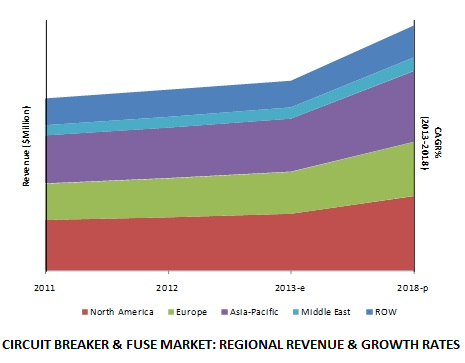Why do we use Circuit Breakers?
- We use Circuit Breakers to protect an electrical circuit or equipments from the damage caused by an overload of electricity or short circuit.
- The basic function of Circuit Breaker is to interrupt the current flow whenever there is flow of electricity more than an peak value or level.
Difference between Fuse and Circuit Breaker
Fuse is used once and then if the fuse is damaged then there must be a replacement for the fuse.
Unlikely the circuit breaker can be used several times by just resetting it either by manually or automatically.
Unlikely the circuit breaker can be used several times by just resetting it either by manually or automatically.
Depending on the Voltage level of installation, Types of Circuit Breakers are :
1) Low-voltage circuit breakers
These Circuit breakers are generally made for direct current (DC) applications. These are commonly used in domestic, commercial and industrial application for less than 1000 volts.
2) Medium-Voltage circuit breakers
These breakers can be assembled into metal enclosed switchgear line ups for indoor applications, or as individual components for outdoor applications like substations.
Examples: Vacuum circuit breakers, air circuit breakers and SF6 circuit breakers
These breakers can be assembled into metal enclosed switchgear line ups for indoor applications, or as individual components for outdoor applications like substations.
Examples: Vacuum circuit breakers, air circuit breakers and SF6 circuit breakers
3) Thermal magnetic circuit breakers
It is the common type of circuit breaker which is found in most Distribution Boards.It Senses circuit current through the production of heat.
Thermal magnetic circuit breakers Generally uses some type of heating element in series with the load.
4) Magnetic circuit breakers
These circuit breakers uses solenoid(Electromagnet) which opposes to the current as the load of current increases beyond capacity. As the current in solenoid increases beyond the capacity of circuit breaker the solenoid resist to the flow of current by pulling a latch which lets the contacts open.
Operating Mechanism of Circuit Breaker
Circuit Breaker consist of two contacts
1) Fixed Contacts
2) Moving Contacts
Moving contact is used for the purpose of making and breaking of the circuit by using stored energies in the form of spring or compressed air.
Spring, pneumatic or oil damping is used to arrest the speed of mc while closing.FC contains a spring which holds the mc after closing.
Parts of Circuit breaker
1. Actuator lever :-
It is used to manually trip and reset the circuit breaker. It also indicates the status of the circuit breaker (On or Off/tripped). Most breakers are designed so they can still trip even if the lever is held or locked in the "on" position. This is sometimes referred to as "free trip" or "positive trip" operation.
2. Actuator mechanism - forces the contacts together or apart.
3. Contacts - Allow current when touching and break the current when moved apart.
4. Terminals
5. Bimetallic strip
6. Calibration screw - allows the manufacturer to precisely adjust the trip current of the device after assembly.
7. Solenoid
8. Arc divider/extinguisher
1) Fixed Contacts
2) Moving Contacts
Moving contact is used for the purpose of making and breaking of the circuit by using stored energies in the form of spring or compressed air.
Spring, pneumatic or oil damping is used to arrest the speed of mc while closing.FC contains a spring which holds the mc after closing.
Internal parts of Circuit Breaker
 |
| Parts of Circuit breaker |
Parts of Circuit breaker
1. Actuator lever :-
It is used to manually trip and reset the circuit breaker. It also indicates the status of the circuit breaker (On or Off/tripped). Most breakers are designed so they can still trip even if the lever is held or locked in the "on" position. This is sometimes referred to as "free trip" or "positive trip" operation.
2. Actuator mechanism - forces the contacts together or apart.
3. Contacts - Allow current when touching and break the current when moved apart.
4. Terminals
5. Bimetallic strip
6. Calibration screw - allows the manufacturer to precisely adjust the trip current of the device after assembly.
7. Solenoid
8. Arc divider/extinguisher
Circuit Breaker Market: Trends and Forecasts
From the revenue and growth rate given below, we can conclude that the America is the Dominating country for Circuit Breaker market. Followed by America the Asia Pacific is the second dominating country for the revenue of circuit breaker market.
The global market is worth $11,700 million in 2013 and is estimated to
reach $15,100 million by 2018, growing at a CAGR of 5.2% from 2013 to
2018.
For more Information regarding the Circuit Breaker Market: Click Here.





